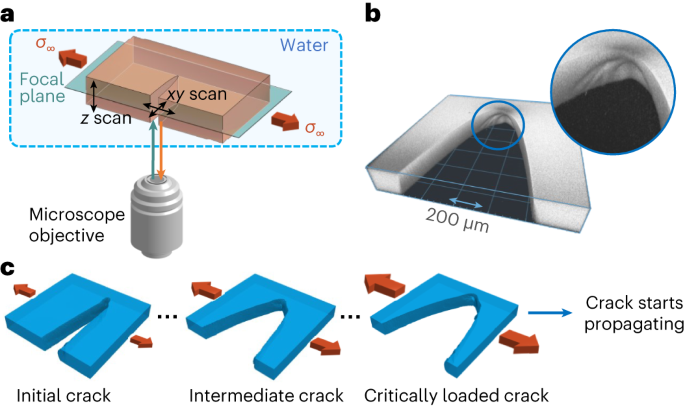2024-03-28 カリフォルニア工科大学(Caltech)

Closeup of the pink crystalline material called lithium holmium yttrium fluoride.Credit: Lance Hayashida/Caltech
◆新たな研究では、従来の磁性の理論だけでなく、量子力学的な効果によってもバルクハウゼンノイズが生じることが示された。この研究は、量子トンネリングと呼ばれる現象を通じて、電子のスピンが同じ方向に揃うようになることが明らかにされた。これにより、量子的な振る舞いを利用して、量子センサーや電子デバイスの開発が可能となる可能性が示唆されている。
<関連情報>
- https://www.caltech.edu/about/news/magnetic-avalanche-triggered-by-quantum-effects
- https://www.pnas.org/doi/10.1073/pnas.2315598121
- https://www.pnas.org/doi/10.1073/pnas.2315787121
磁壁コトンネリングによって誘起される量子バルクハウゼンノイズ Quantum Barkhausen noise induced by domain wall cotunneling
C. Simon, D.M. Silevitch , P.C.E. Stamp stamp, and T.F. Rosenbaum
Proceedings of the National Academy of Sciences Published:March 19, 2024
DOI:https://doi.org/10.1073/pnas.2315598121
Significance
Noise phenomena are ubiquitous in nature and often are regarded as an unfortunate background that confounds desirable signals. However, the distribution and correlations of the noise itself can reveal much of the underlying physics of a material. Here, we find that, in our carefully chosen system, the “Barkhausen noise” present in all magnets is actually dominated by correlated quantum tunneling phenomena, in which millions of billions of spins tunnel together to produce “quantum noise.” Understanding how such large-scale quantum effects can be created and controlled is an essential element for developing new devices and applications that depend on quantum coherence, such as qubit processors.
Abstract
Most macroscopic magnetic phenomena (including magnetic hysteresis) are typically understood classically. Here, we examine the dynamics of a uniaxial rare-earth ferromagnet deep within the quantum regime, so that domain wall motion, and the associated hysteresis, is initiated by quantum nucleation, which then grows into large-scale domain wall motion, which is observable as an unusual form of Barkhausen noise. We observe noncritical behavior in the resulting avalanche dynamics that only can be explained by going beyond traditional renormalization group methods or classical domain wall models. We find that this “quantum Barkhausen noise” exhibits two distinct mechanisms for domain wall movement, each of which is quantum-mechanical, but with very different dependences on an external magnetic field applied transverse to the spin (Ising) axis. These observations can be understood in terms of the correlated motion of pairs of domain walls, nucleated by cotunneling of plaquettes (sections of domain wall), with plaquette pairs correlated by dipolar interactions; this correlation is suppressed by the transverse field. Similar macroscopic correlations may be expected to appear in the hysteresis of other systems with long-range interactions.
重ね合わせ格子における量子干渉 Quantum interference in superposed lattices
Yejun Feng, Yishu Wang, T. F. Rosenbaum, +1, and Hua Chen
Proceedings of the National Academy of Sciences Published:February 5, 2024
DOI:https://doi.org/10.1073/pnas.2315787121

Significance
Understanding the Fermi surface is of fundamental importance to metals. Here, we explore a situation where two sets of incommensurate lattices are superposed together in the elemental metal Cr. These two reciprocal lattices are connected through many-body electron correlations that have distinct experimental signatures. They combine to build a Fermi surface with many small de Haas–van Alphen orbits and quantum interference paths that are not detectable by standard photoemission techniques. In the spin- and charge-density-wave state of Cr, this construction leads to Shubnikov–de Haas oscillations with opposite phases between two orthogonal channels of transverse magnetoresistance. This phenomenon represents a natural three-dimensional analogue to topological and Moiré systems.
Abstract
Charge transport in solids at low temperature reveals a material’s mesoscopic properties and structure. Under a magnetic field, Shubnikov–de Haas (SdH) oscillations inform complex quantum transport phenomena that are not limited by the ground state characteristics and have facilitated extensive explorations of quantum and topological interest in two- and three-dimensional materials. Here, in elemental metal Cr with two incommensurately superposed lattices of ions and a spin-density-wave ground state, we reveal that the phases of several low-frequency SdH oscillations in σxx (ρxx) and σyy (ρyy) are no longer identical but opposite. These relationships contrast with the SdH oscillations from normal cyclotron orbits that maintain identical phases between σxx (ρxx) and σyy (ρyy) . We trace the origin of the low-frequency SdH oscillations to quantum interference effects arising from the incommensurate orbits of Cr’s superposed reciprocal lattices and explain the observed π-phase shift by the reconnection of anisotropic joint open and closed orbits.



